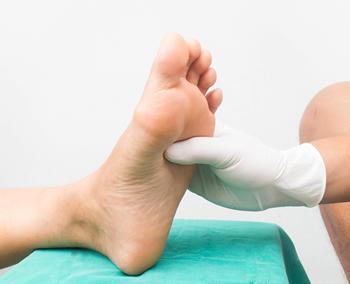
Diabetes is a chronic condition that affects how your body uses and processes blood sugar. One of the main symptoms of diabetes is nerve pain, creating numbness in the hands and feet (peripheral neuropathy). If you have diabetes, it’s important that you regularly see a podiatrist. The nerve damage prevents blood from reaching your feet, making it hard to notice when you have a foot injury. A podiatrist can help treat any injuries and foot conditions while also providing you with preventive care.
Keep Track of Your Levels
Monitoring your blood sugar levels keeps both your feet and body healthy. High levels increase your risk of nerve damage. Besides taking your medication, try following a healthy diet and exercise regimen. Losing excess weight makes your diabetes easier to manage.
Pay Attention to Your Feet
Your podiatrist recommends checking your feet every day for injuries or other issues. Be on the lookout for blisters, cuts, swelling, redness, or nail problems. These indicate a bigger issue at hand. Things like blisters or dry skin put you at risk of infection. If you notice anything out of the ordinary, see your podiatrist right away.
Wear Shoes and Socks Daily
People with diabetes need to protect their feet at all costs. This means that they should never go barefoot. Always wear socks and preferably shoes. Choose cotton or wool socks that aren’t too tight. For shoes, you want a pair that fits properly, is insulated and protects you from injuries.
Toenail Maintenance
Your podiatrist suggests keeping your toenails trimmed and cleaned when you have diabetes. This prevents dangerous infections from ingrown toenails. When you do cut your nails, do so straight across. Don’t try curbing them or cutting the corners and cuticles. Have a loved one help you with your nails if you can’t reach them yourself.
Washing Your Feet
Be extra cautious when washing your feet. Always wash them with lukewarm water, taking care to dry them carefully after. Use a soft washcloth or sponge to avoid injury. You should moisture them after they are dry, just avoid applying lotion between the toes.
Talk to Your Podiatrist
It’s important to stay in contact with your podiatrist with regular appointments. They work with you to manage your diabetic symptoms in your feet. Remember to practice foot care every day to stay safe.











